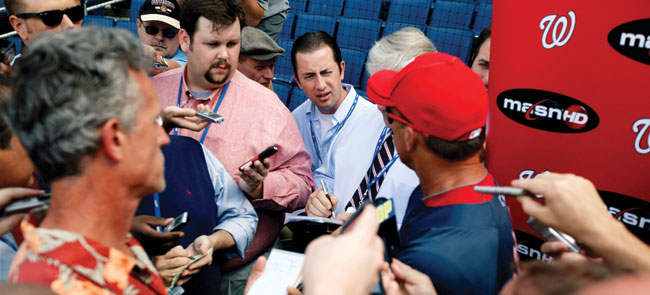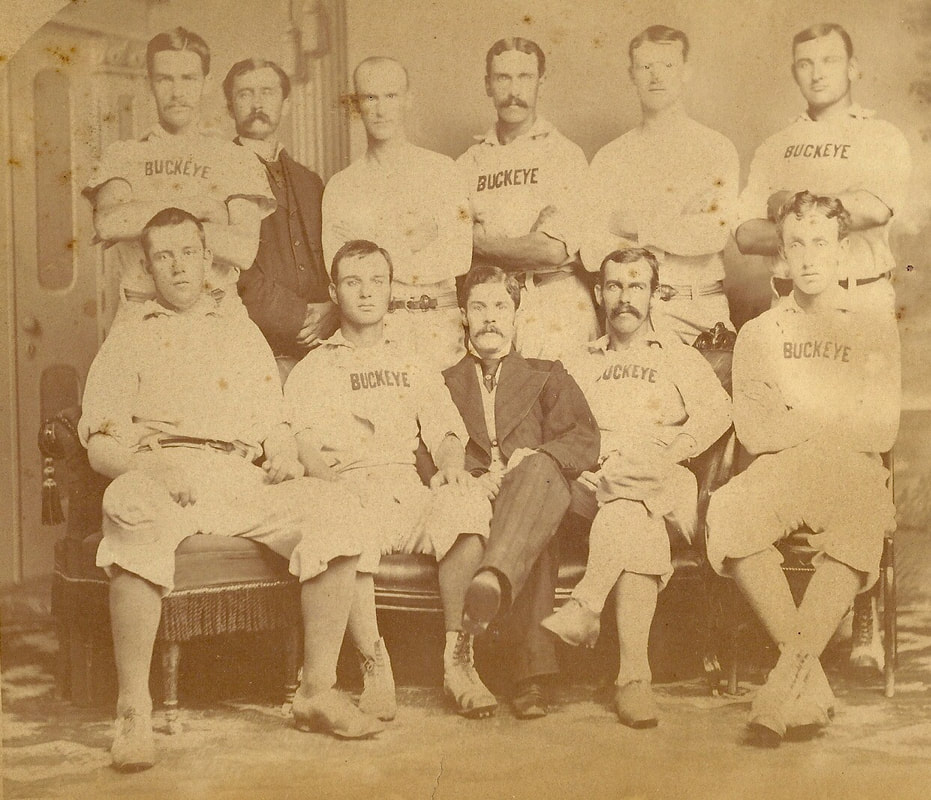 Tyler Kepner, light blue shirt in center, before Stephen Strasburg's first game 2010. Courtesy of Vanderbillt University, Tyler Kepner, light blue shirt in center, before Stephen Strasburg's first game 2010. Courtesy of Vanderbillt University, Need a baseball fix? Here’s one, right in the heart of Manhattan on Jan. 27 – a day-long festival of the summer sport, from SABR, the baseball research organization. The speakers include many experts in baseball and/or research, including a librarian, a major-league umpire, a scout who played for the Philadelphia A's in 1953, and an outfielder who helped win the 1969 World Series. Another speaker will be Tyler Kepner of the New York Times, who has been writing (excellently) about baseball since he was, I think, 3 years old. Speaking of precocity, if you know a youthful baseball fan who follows all the trade rumors and knows the new analytics like WAR (I have no clue what that is, but I hear it all the time), this conference might make the young savant happy on a Saturday in January. I spoke at this conference five years or so ago, and one of the highlights for me was a young fan who asked a good question and seemed to know just as much as the predominant geezers who had witnessed Carl Furillo and Monte Irvin and Whitey Ford in this city. (The rate for “students” is $20 as opposed to the rate of $35, still reasonable.) Sometimes a young pheenom of a fan actually grows up to be Tyler Kepner. I witnessed that not long ago when a kid in Philadelphia started putting out an occasional baseball magazine, with features by him, drawings by him, layouts by him, headlines by him, circulation by him, marketing by him. The occasional journal was Phillie-centric, and it was charming. The very same Tyler Kepner is now a great baseball writer for The Times, old enough to have four children. Back in the day, Tyler produced his baseball magazine irregularly, to allow him to honor other commitments, like kindergarten. The late and lamented Robert McG Thomas, Jr., of the NYT wrote a feature about him in 1989: http://www.nytimes.com/1989/11/13/sports/sports-world-specials-baseball-pitcher-outfielder-publisher.html. Nowadays, in the time of the Web, when sportswriters are lashed to the 24-hour hamster wheel, Tyler keeps typing away, brilliantly. I recently heard how at the seventh game of the 2016 World Series he wrote an early column and then late in the game wrote a new column on Rajai Davis when it appeared Davis’s homer would win won the Series. However, the Davis column never made the paper or the Web because, well, the Cubs won while Tyler was typing. So he started all over again, and then woke up the next morning and fed a few more columns to the beast – five columns within 18 hours, by the office's count. The program for the SABR event does not specify Tyler’s subject on Jan. 27th but notes that he is currently writing a book. Oddly enough, about baseball. The program will take place Jan. 27, 2018, from 10 AM to 3 PM at the New York Public Library, at 42nd St. and Fifth Avenue (you know, the one with the lions.) It will be held in the Celeste Auditorium, lower level of the South Court, of the Stephen A. Schwarzman Building. The event is officially the New York City Casey Stengel Chapter’s annual meeting, as part of the Society for American Baseball Research. The participants, recruited and moderated by Ernestine Miller, are: Virginia Bartow, the Senior Rare Book Cataloger in the Special Collections at the New York Public Library, whose illustrated presentation includes photos, graphs, trade cards, newspaper features and other memorabilia of baseball in New York. Ed Randall, moderator of a panel on: “Standouts of the Game”-- author and on-air personality for WFAN, Sirius and ESPN Phil Cuzzi, Major League umpire who has worked for 22 years in 2,428 games including three MLB no-hitters. Tom Giordano, age 92, long-time scout and official who scouted Cal Ripken, Jr., and in 1953 played 11 games for the 1953 Philadelphia Athletics under manager Jimmy Dykes. Art Shamsky, who platooned with Ron Swoboda on the 1969 Miracle Mets, and remains the only player in MLB history to hit three home runs in a game in which he was not in the starting lineup. Jon Springer, SABR research presentation on Edward "The Only" Nolan, the star pitcher of the 1884 Quicksteps, a team that played a role in the first battle of the Reserve Clause war, the establishment of post-season play, and the evolution of playing rules and equipment. Nolan was recognized for his unique pitches as well as his notorious behavior which led to fines, suspensions, being kicked off a team, and eventually, his being blacklisted from the league. (I have never heard of Nolan. This is what SABR does so well: telling about fascinating players from long-ago times.) Diane Firstman will make a SABR research presentation, “The Three True Outcomes,” shedding light on the relationships among walks, strikeouts, and homers from her research on “three true outcomes” (TTO). She will highlight trends comparing Babe Ruth, Mickey Mantle and Aaron Judge in those categories. After this warmup it will soon be time for that glorious annual event called Pitchers and Catchers. It’s coming, honest, it’s coming. Please pre-register if possible, with David Lippman at: [email protected]
bruce
1/19/2018 01:34:56 pm
george,
George Vecsey
1/19/2018 02:26:50 pm
I once heard Frank Robinson say, when he was managing Baltimore, that the baseball record that floored him was Joe D's 361 homers against 369 strikeouts. He just shook his head in respect.
bruce
1/19/2018 04:46:47 pm
George,
George Vecsey
1/20/2018 02:23:55 pm
Bruce, absolutely different. There was a discipline.
George Vecsey
1/20/2018 02:29:46 pm
Bruce, just looked it up. FRobby and McRae did not overlap, Pinson and McRae one year, but they set the tone of the team, Rose being the prime example spanning those eras. And Joe Morgan when he came over, in 72, fit into that savvy tradition. .I was living in Louisville 70-72 and saw a lot of Reds; great team. GV
bruce
1/20/2018 03:42:08 pm
George, Comments are closed.
|
Categories
All
|










